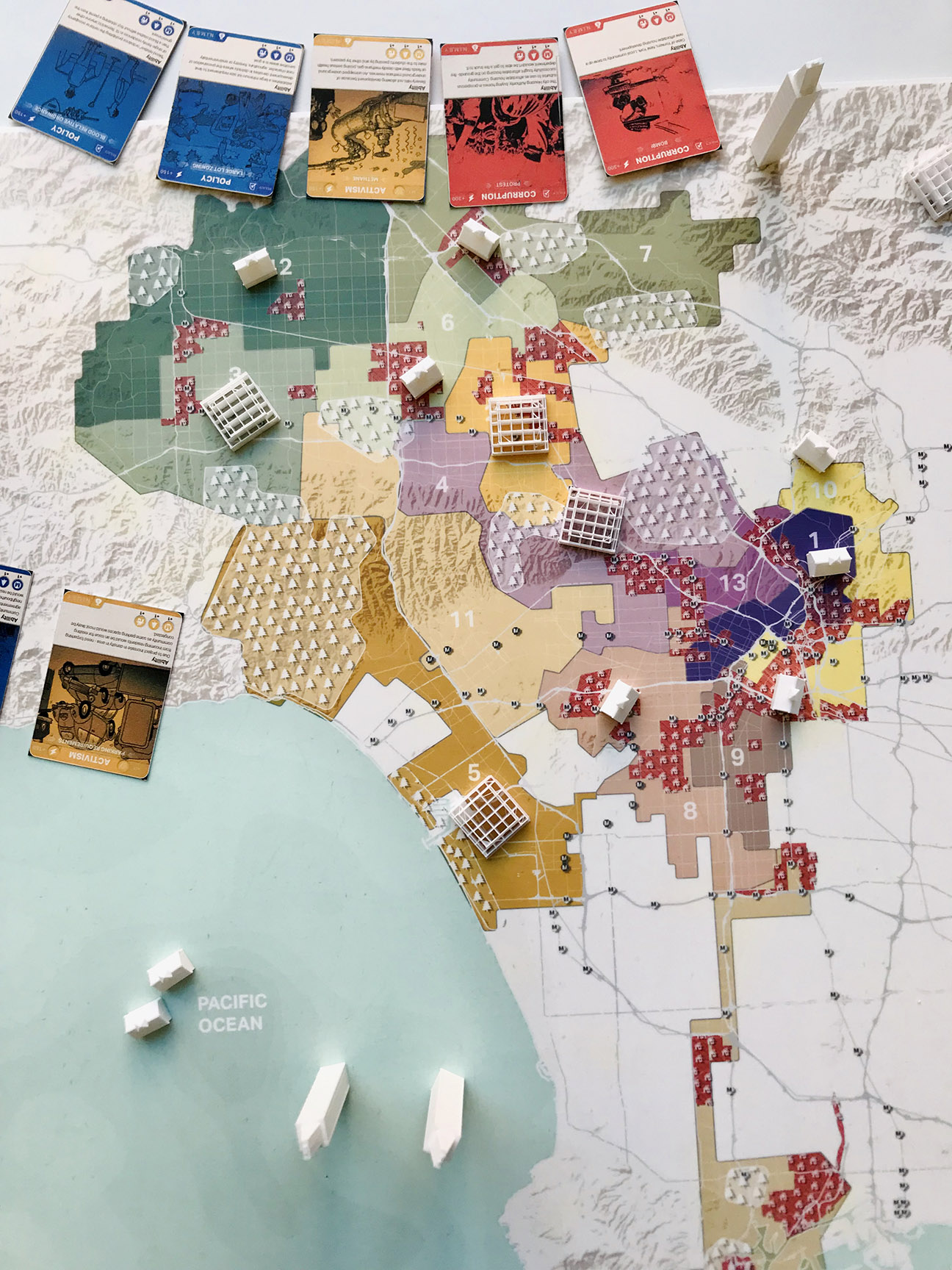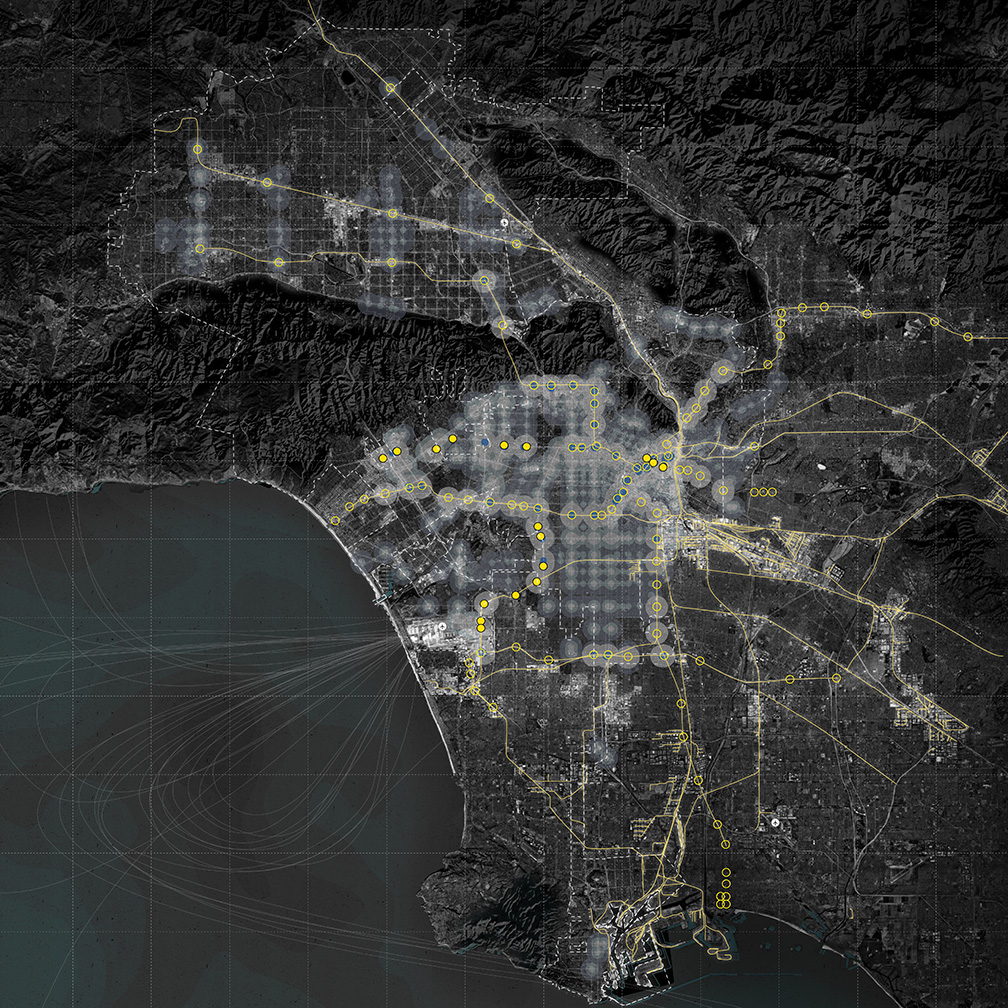Equity in Housing Distribution

by Sarah Fayad (MLAUD ’20)
Los Angeles needs over 560,000 units to close the gap of its current housing needs. Despite the efforts to bridge this gap, cities of Los Angeles have continued to lag behind in housing construction. To showcase the severity of the problem and the resulting stark inequality in housing distribution, a board game titled ‘LA DenCity’ was designed where the goal of players is to try and distribute as many affordable housing while overcoming ‘NIMBY scare cards’. For example, when the city tried to place 50 units for the homeless, NIMBY’s used Environmental Quality Act to prevent it!
Housing patterns of segregation trace back to the 1930’s, when government-sponsored Home Owners Loan Corporation (HOLC) produced a map of Los Angeles that would crystalize biased lending practices and reinforce racial and class bias in home ownership. In the later years, Section 8 vouchers were given to home renters in areas of low-income. Most recently, the Regional Housing Needs Allocation (RHNA) have proven not to reflect true housing needs. Instead cities, like Beverly Hills, with the least affordability had the lowest allocation of new housing (3 units).
[me
In response to these housing crises, the project addresses the stigma associated with affordable housing and the unequal distribution across Los Angeles. Through extensive mapping, the project investigates the relationship between land use regulations and economic segregation driven by land use policies. It highlights that while policies seem to come with the intention of bridging the housing inequality gap, they reinforce patterns of segregation by steering people in low-income groups into areas of concentrated poverty. As a result, areas such as Beverly Hills and Santa Monica lobby to continue having a low number of affordable housing units while cities like Los Angeles are being choked with additional housing allocation.
While highlighting the flaws associated with RHNA’s allocation strategy, the project proposes a new strategy for equitable housing distribution which includes the proposition for ‘Priority Growth Areas’ (PGAs). Rather than taking income as the main criteria for allocation, new areas are unlocked for distribution using network centrality analysis (based on accessibility to transit, jobs and ‘good’ schools as a determining criteria). This PGA strategy would serve as the new tool for city government to drive equitable growth in Los Angeles.





